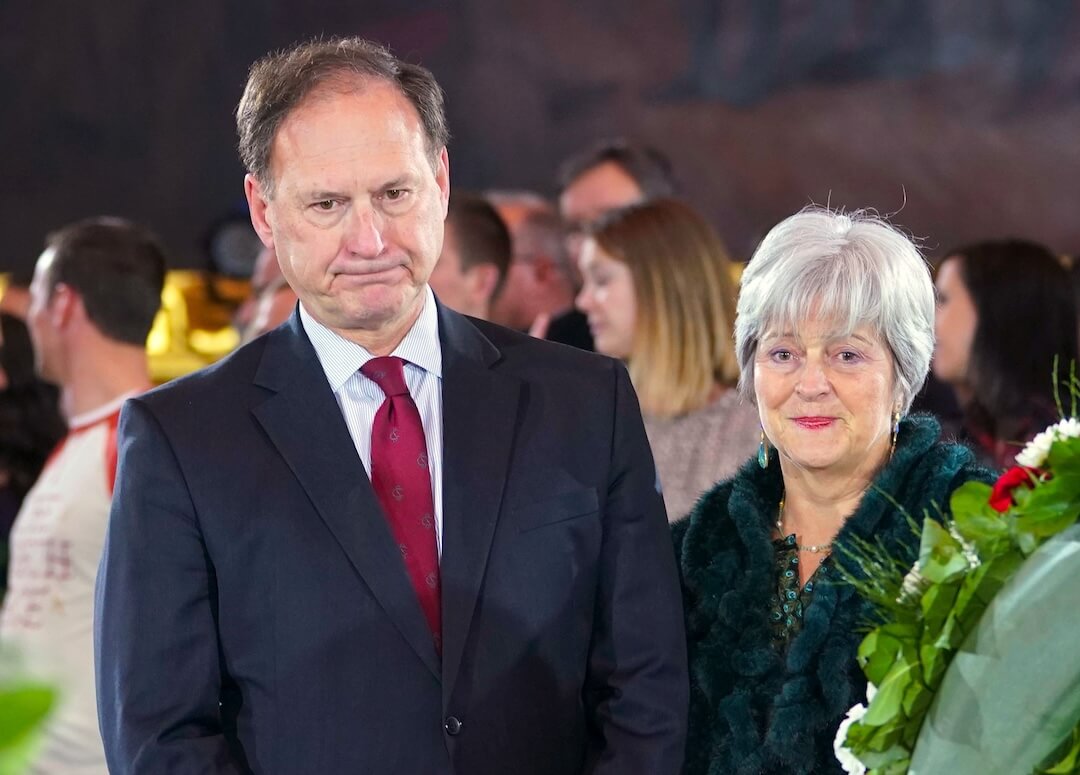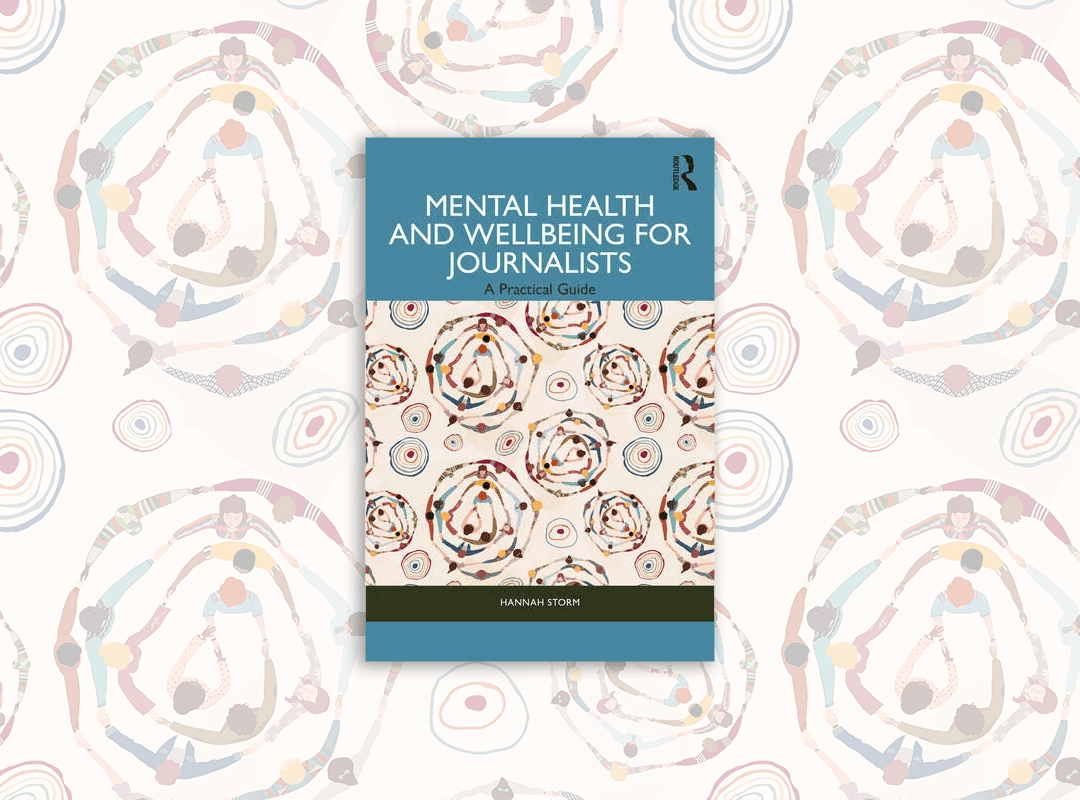The annual Reuters Institute Digital News Report, released Tuesday evening, with its survey of more than 93,000 readers in 46 countries, lays out a trio of tough challenges for publishers:
- Selective news avoidance is high and increasing. On average, 38% of those surveyed said that they often or sometimes avoid news on certain topics — especially politics and COVID-19. They find that kind of journalism depressing and repetitive.
- Levels of trust remain low. Only 42% of those surveyed said they trust most news most of the time. As was the case a year ago, the United States finishes dead last among the countries with just 26% expressing trust, a three-point dip from 2021.
- Progress on getting users to pay for digital news remains halting. In the U.S., 19% pay for at least some online news, but large national newspapers are capturing most of that action. Paid digital subscriptions for regional titles are a much harder sell.
Also, despite the attention to Substack successes, individual brands are so far a blip. In the U.S., only 7% of the group who do pay for any subscriptions pay for one or more newsletters.
While news avoidance has been on the radar for some time, Oxford-based Reuters digs a bit deeper.
The survey is repeated year-to-year, and the rate for selective avoidance has gone up significantly in the last five years — from 29% as measured in 2017 to the current 38%.
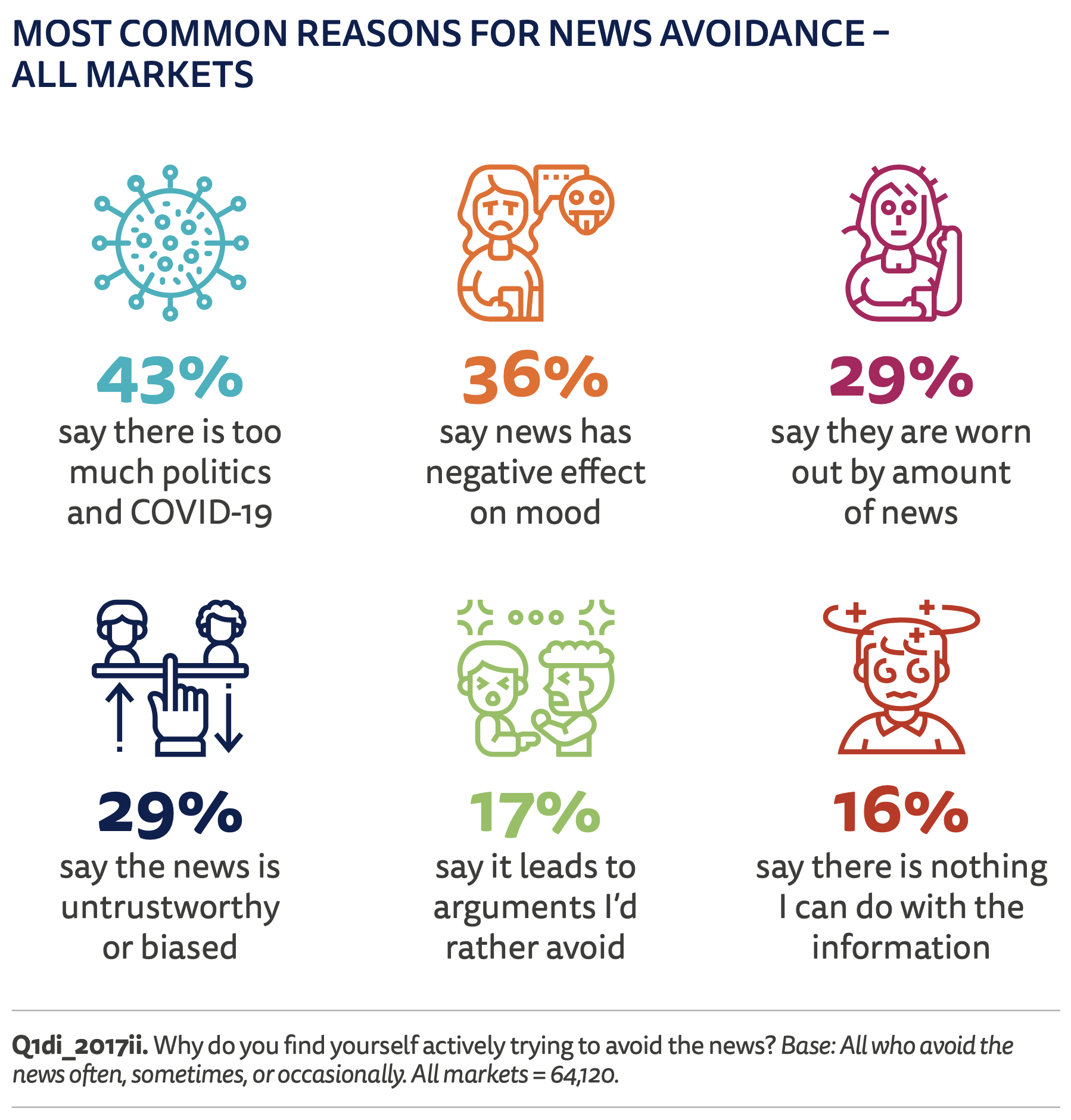
(Reuters Institute)
The range of countries sampled allows filling in another part of the news avoidance picture. Countries with a high degree of political turmoil — Brazil (54%), the United Kingdom (46%) and the U.S. (42%) — had the worst levels. At the bottom of the avoidance list were countries with a far less volatile political climate — Japan, Denmark and Finland.
Probing for reasons, the Reuters researchers summarized:
“Around 36% — particularly those under 35 — say that the news brings down their mood. Others say the news leads to arguments they’d rather avoid (17%) or leads to feelings of powerlessness (16%). A significant proportion of younger people say they avoid news because it can be hard to follow, suggesting that the news media could do more to simplify language and explain complex stories. Although the survey took place before the war of Ukraine, subsequent polling in five countries showed that news avoidance has, if anything, increased further.”
The bind for the news industry is clear, lead author Nic Newman commented. “Subjects that journalists consider most important, such as political crises, international conflicts and global pandemics, seem to be precisely the ones that are turning some people away.”
While the report is not prescriptive, I asked Newman what might be done about news avoidance and received a detailed answer by email.
“Some of this is a function of the move to digital — people feel they are being bombarded/overloaded often when they haven’t asked for it. Also that the abundance of other (more entertaining) choices means it is easier to avoid/select something less depressing.”
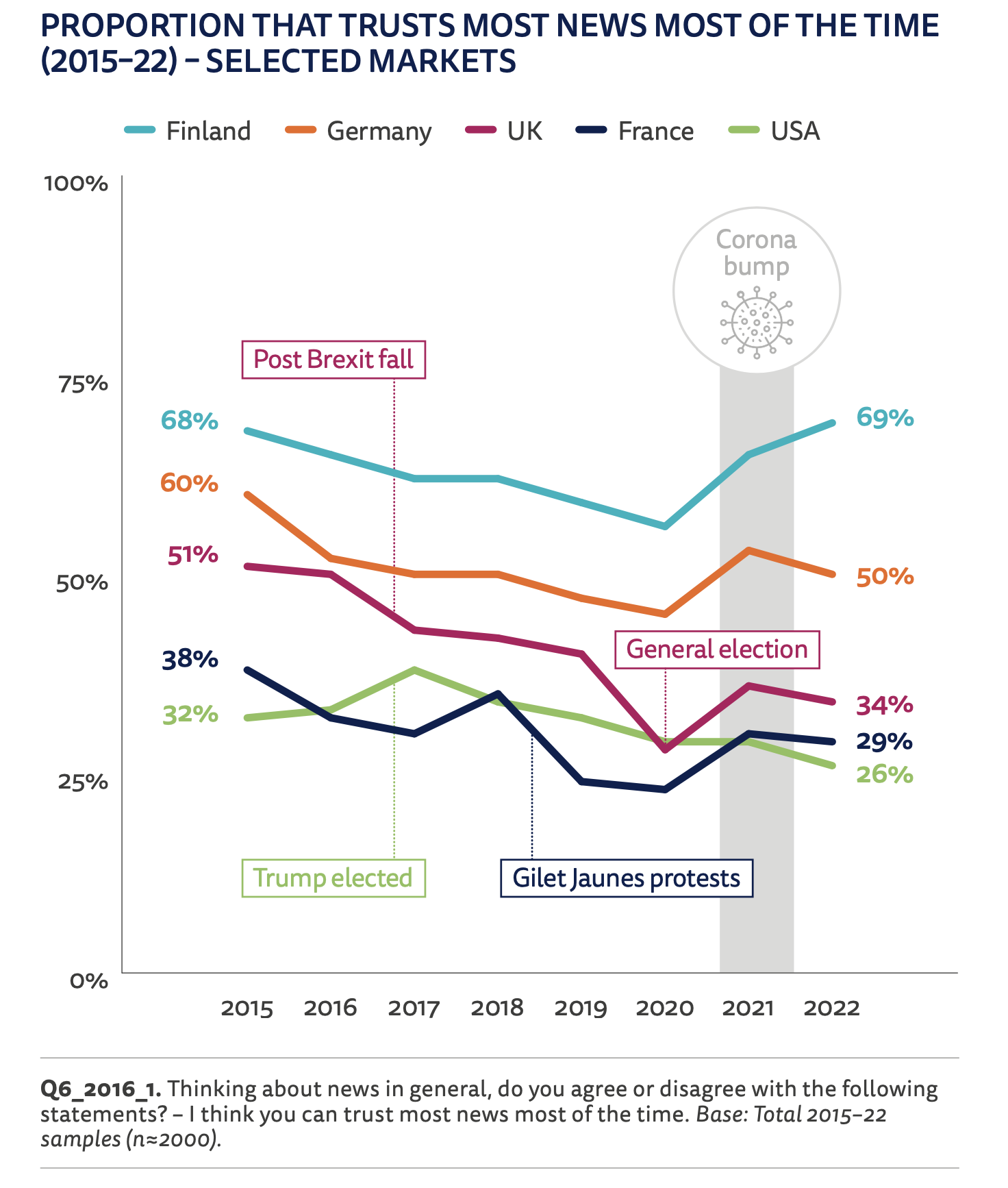
(Reuters Institute)
Ignoring big news or dumbing down coverage are not attractive options, Newman continued, but he suggested:
- Addressing trust issues is part of the answer. Be sure that stories are evidence-based, avoid sensationalist hype and label opinion as such. Still, current “levels of partisanship” will block progress even with best practices.
- “Making news more accessible/easier to understand. This is one of the other reasons why young people and less educated groups avoid. The news is often written for avid news consumers with a lot of knowledge. So more explanation, answering questions, easy to consume digital formats (e.g. video) that are fact-based and accessible. Avoiding jargon and insider speak will help.”
- ”Some publishers are working on personalization that automatically formats stories to fit consumption styles (bullet points or more videos, pictures). That may also help over time to make news more accessible and relevant … Television has an outsized influence on perceptions of ‘too much COVID, too much politics.’ So a wider and more diverse agenda there might help, but I suspect they think they will then lose their core avid news follower audience which is what matters commercially.”
“So dilemmas all around,” Newman said.
Given the current push in the U.S. to build paid digital subscriptions among regional chains and independents, I thought the massive report’s section on paying for digital news also merited special attention.
Reuters Institute director Rasmus Kleis Nielsen has long used the term “winner takes most” to describe how big national titles hog the lion’s share of spending — advertising as well as subscriptions.
This year’s survey sought to factor in subscriptions to other streaming services in predicting how news subscriptions will fare. Here too the news was not cheering. In both the U.S. and internationally, roughly the same percentage indicated that they were looking to cut their total subscription expenditure in the coming year as planned to increase it.
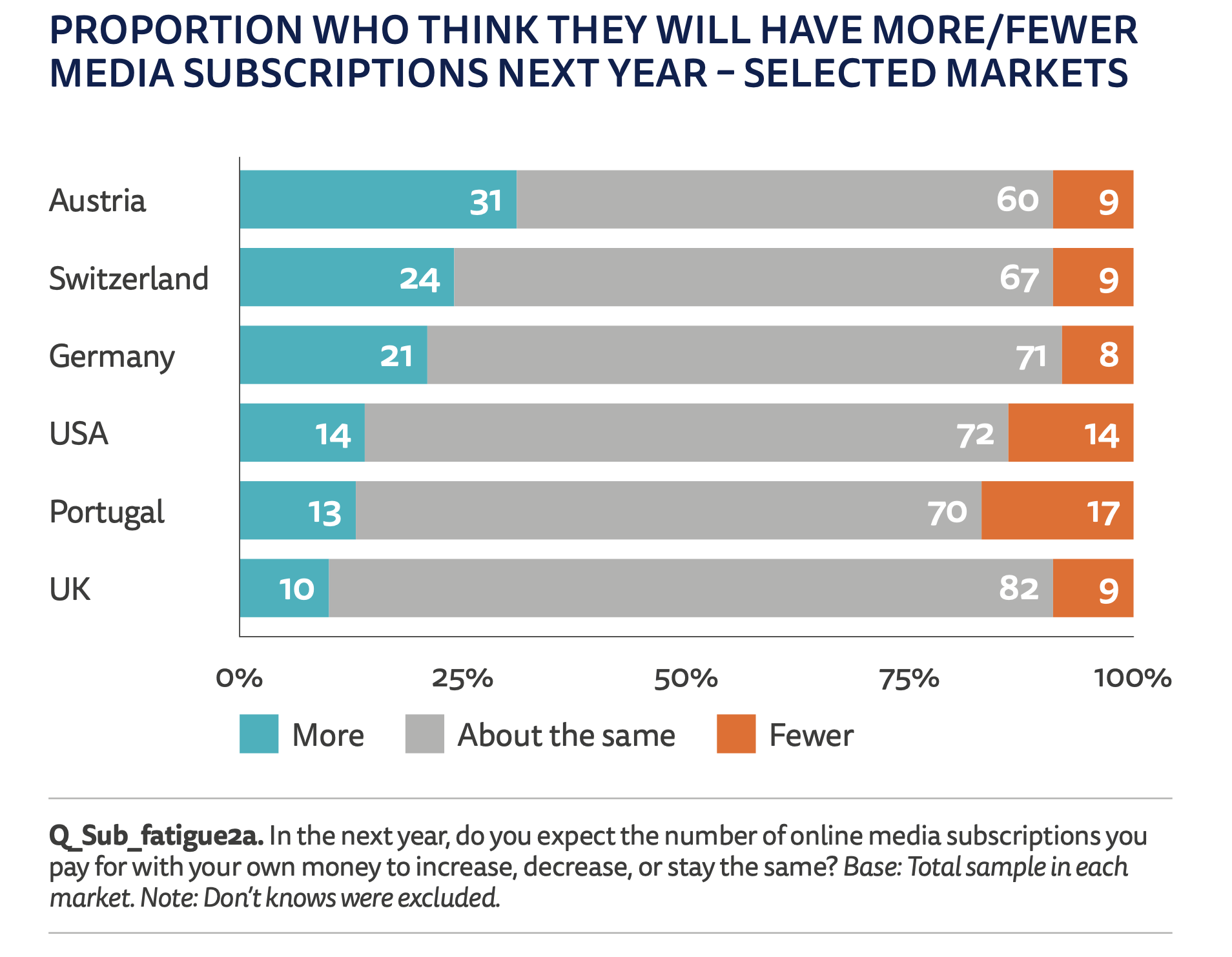
(Reuters Institute)
Nielsen’s summary comment on paid digital subscriptions is sobering:
“While many upmarket news providers have seen great success in building digital subscription businesses, it is not a model that will work for every publisher. A growing number of outlets are chasing the relatively small number of people prepared to pay for online news and local news struggle to build a critical mass of subscribers.
“Most fundamentally, much of the public — including people who happily subscribe to online video or music streaming services — do not find news worth paying for. It is therefore critically important, especially for those who believe journalism needs to serve the whole public, to think about how they can create a more compelling offer for a wider public and look beyond subscription-based models that primarily serve more privileged people.”
I would argue that philanthropic support and voluntary donations in the U.S. brighten the picture here and undergird the growth of a sector of important nonprofits.
At the same time, only the strongest regionals seem to be rounding the corner to becoming self-sustaining as digital enterprises. And I am not so sure that the formidable challenge of creating a bundle of digital local news worth paying is one the majority of legacy publishers are facing head-on.




